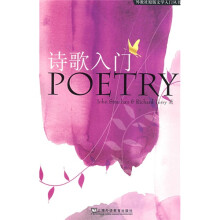Acknowledgements
Introduction
1 The key words of poetry
1.1 What is poetry.
1.2 The key words of English poetic history
2 The shape of poetry
2.1 The aesthetics of print
2.2 Pictograms and concrete poems
2.3 Visible but unreadable
2.4 Layout and punctuation
2.5 The poetic stanza and stanzaic form
3 The sound of poetry
3.1 Poetic sound effects: an overview
3.2 Onomatopoeia
3.3 Sound,patterning
3.4 Rhyme
3.5 The orthodox rhyme
3.6 Some unorthodox rhymes
3.7 Some indeterminacies of rhyme
3.8 Rhyme and meaning
4 Metre and rhythm
4.1 Complexities in the study of metre
4.2 The key metrical units
4.3 Metrical regularity and variance
4.4 Missing and extra syllables
4.5 Feet
4.6 Iambic metre
4.7 Trochaic metre
4.8 Dactylic metre
4.9 Anapaestic metre
4.10 Occasional feet
4.11 Metrical verse lines
4.12 Free verse
5 Comparisonsandassociations
5.1 Literal v. figurative
5.2 Metaphor and simile
5.3 Metonymy and synecdoche
5.4 Tenor, vehicle and ground
5.5 Conceits and extended similes
5.6 Dead and dying metaphors
5.7 Riddle poems
6 The words of poetry
6.1 Linguistic diversity
6.2 Poetic diction
6.3 Poetry of the everyday language
6.4 Creating your own language
6.5 Diction and argots
6.6 Poems about language
6.7 The Queens (and other peoples) English
A glossary of poetical terms Index

